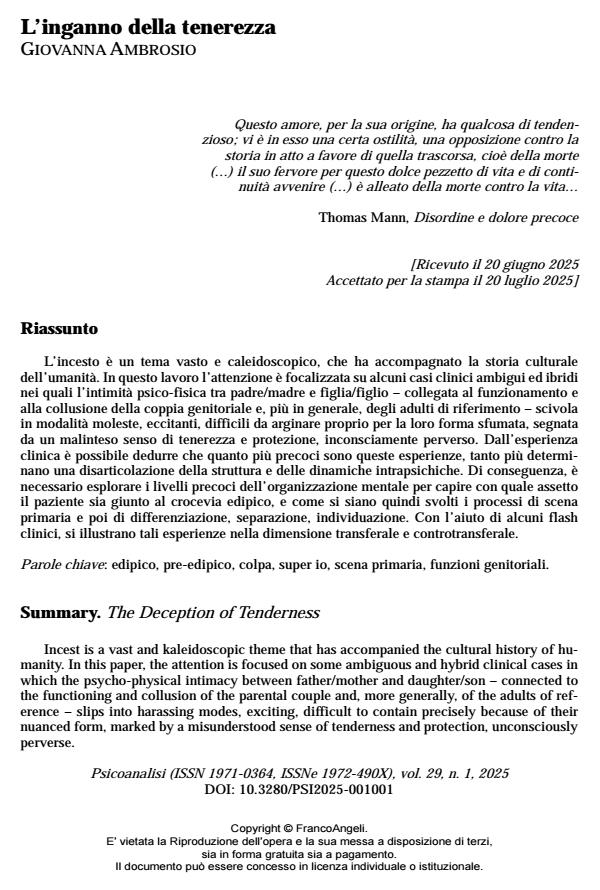The Deception of Tenderness
Journal title PSICOANALISI
Author/s Giovanna Ambrosio
Publishing Year 2025 Issue 2025/1
Language Italian Pages 18 P. 5-22 File size 145 KB
DOI 10.3280/PSI2025-001001
DOI is like a bar code for intellectual property: to have more infomation
click here
Below, you can see the article first page
If you want to buy this article in PDF format, you can do it, following the instructions to buy download credits

FrancoAngeli is member of Publishers International Linking Association, Inc (PILA), a not-for-profit association which run the CrossRef service enabling links to and from online scholarly content.
Incest is a vast and kaleidoscopic theme that has accompanied the cultural history of humanity. In this paper, the attention is focused on some ambiguous and hybrid clinical cases in which the psycho-physical intimacy between father/mother and daughter/son – connected to the functioning and collusion of the parental couple and, more generally, of the adults of reference – slips into harassing modes, exciting, difficult to contain precisely because of their nuanced form, marked by a misunderstood sense of tenderness and protection, unconsciously perverse. From clinical experience is possible deduce that the earlier these experiences are, the more disarticulating and destructive it will be for the psychic structure and intrapsychic dynamics. Consequently, it is necessary to explore the early levels of mental organization to understand with which structure the patient has reached the Oedipal crossroads, and how the processes of the primal scene and then of differentiation, separation, individuation have taken place. With the help of some clinical flashes, the Author illustrates these experiences in the transferential and counter transferential dimension.
Keywords: Oedipal pre-oedipal, guilt, super ego, primal scene, parental functions.
Giovanna Ambrosio, L’inganno della tenerezza in "PSICOANALISI" 1/2025, pp 5-22, DOI: 10.3280/PSI2025-001001